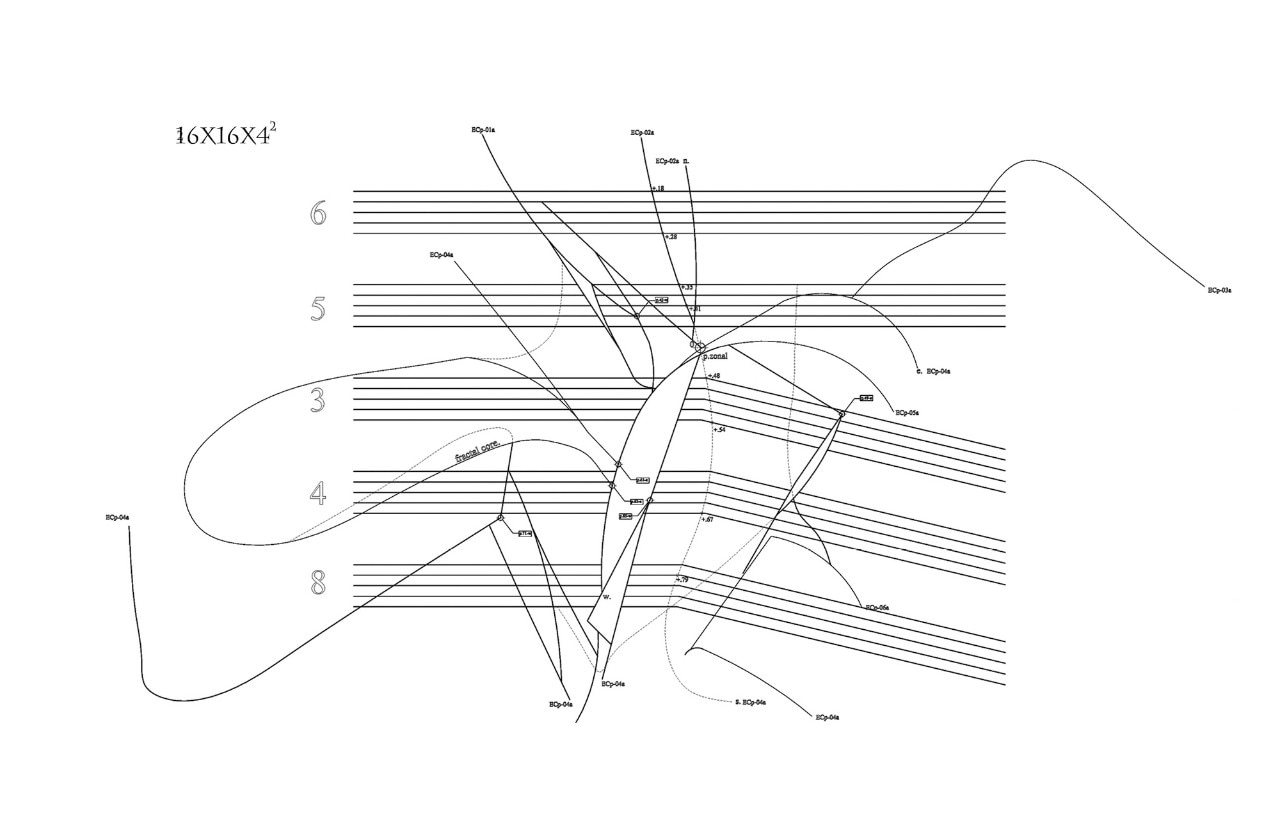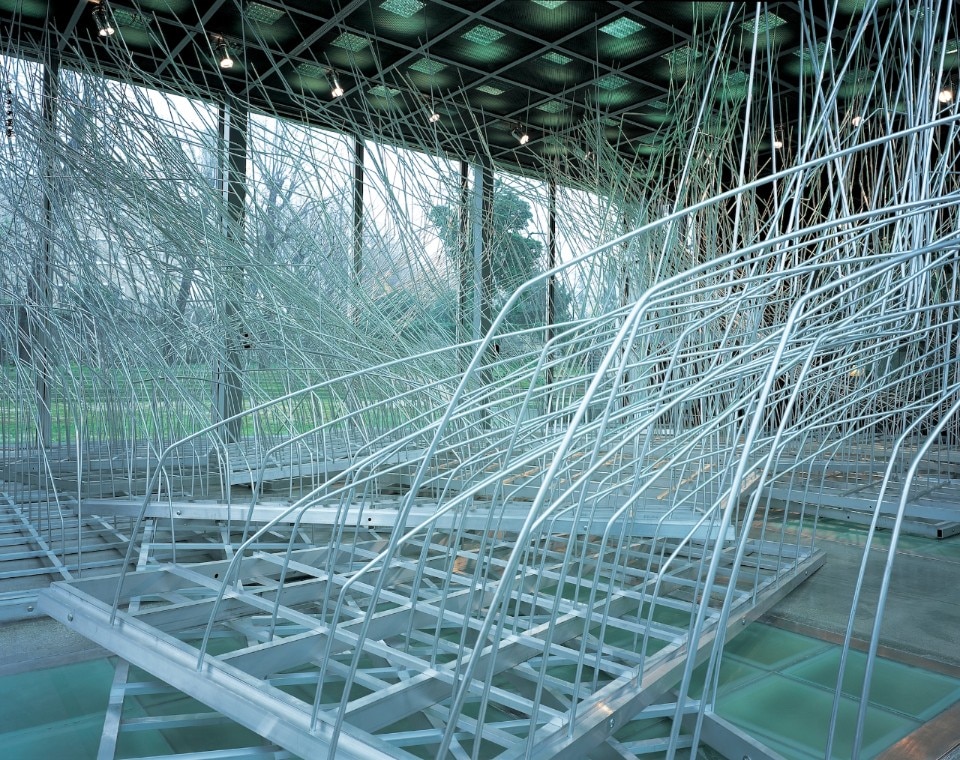The April issue of Domus focuses on the synthesis of the arts through sticastic thinking. Holl, in his Editorial, explains how abstraction is a key creative element in the design process. “Stochastic behavior is antideterministic. It finally makes us free from the dogmatic theories of rationalism, postmodernism, deconstruction and parametricism. We become curious, we search for a starting point. We imagine an idea to guide the project.”
Starting from the section on Stochastic Thinking, Yehuda Emmanuel Safran reasons on the slight line of distinction between oscillations and randomness. The laws of probability are always at work in the world of art and architecture, with the uncertainty that characterizes any art or science. Steven Holl continues by describing the work of Vincent Fecteau. As is the case with physical manifestations of stochastic thinking, the U.S. artist shapes intuition to create his sculptures, small-scale architectures of shadow and light. Next, Thom Mayne writes about the complexity, differentiation, and reciprocity of heterogeneous and ambiguous elements are at the heart of Morphosis’ activity, the basis of a creative process that seeks to translate the cacophony of human experience. Alessandro Benetti describes the Villa Mâche designed by Iannis Xenakis, where with a double register of familiarity and estrangement, the architecture is emblematic of the hybridizations between the languages of the different disciplines of the architect-engineer-musician. Closing the section for José Aragüez, chaos theory is the fundamental field of study for defining the sphere of mediation of languages so as to integrate it into recent philosophies of order.
Continuing with the theme Blurred Boundaries, Holl interviews the architects Höweler + Yoon involved in the design of the Moongate Bridge in Shanghai. Inspired by the traditional Chinese garden, the bridge embodies the firm’s penchant for creating relationships between different disciplines. Alberto Campo Baeza reiterates, illustrating with his drawings, the centrality of light in defining spaces. Lebbeus Woods tells us about Lauretta Vinciarelli’s work, which through and pictorial techniques reveals a symmetry between the life and work of the artist and architect: it cannot be changed, only continued. Nifemi Marcus-Bello dialogues with the Guest Editor of the continuous exchange between design and architecture.
With a 2013 paper, we recall Zaha Hadid, who reflected on axonometric projection, a fundamental design tool for looking at building in many ways. Next, Bryan Cantley recounts drawing as a speculative tool, while for Perry Kulper it represents a crucial aspect of the imaginative development of space. Stan Allen writes about the architecture of John Hejduk. The American architect's pictorial volumes house the functions of the dwelling, but they also serve as a threshold: a membrane between past and future, body and mind.
For the Entanglements section, Eric Owen Moss discusses with Steven Holl the latest of the firm’s interventions at Hayden Tract in West Los Angeles: a tower that expresses its logic through structure. Fulvio Irace writes about Giovanni Michelucci's iconic architecture. The organic composition of the church, which commemorates the victims of the A1 construction, is metaphorical of the need to preserve a sense of solidarity in the face of the arrival of modernity. Next, the work of American choreographer Jessica Lang, whose subject matter is the body and set design, celebrates the interweaving of the arts through spatial exploration. Closing the section, Steven Holl and Eric Keune write about the Cesar Chavez Student Center designed by Paffard Keatinge-Clay. The center, located in the heart of the university campus, is a radical and dynamic composition that testifies to the power of architectural art.
In closing, the Guest Editor narrates the issue's cover, featuring a drawing inspired by György Ligeti, a seminal and influential modern composer.

This month’s Diario, with the usual pages dedicated to current events, is opened by the Travel in Italy section, where Editorial Director Walter Mariotti recounts another stage of the year-long journey along the peninsula. This time we stop in Pompeii. Land consumption, demographic hyperdensity and deindustrialization touch European summits, opposed to the historical and archaeological value of these places. Next, Giulia Ricci visits Uzbekistan, a country that is transforming itself thanks to a political will that places culture as a conduit to the international stage. Cecilia Fabiani recounts the adventure of Secco Sistemi. The company’s more than 70 years of activity, choices and journey, recounted by Antonio Poletto, general manager of Secco Sistemi. Finally, this month we dedicate the final pages to Milan Design Week 2023. Just a few days before its inauguration, which will animate the Fair and Fuorisalone from April 16 to 23, we anticipate 30 projects (+ 1): a virtual path waiting to experience live the hundreds of events that will transform the city. Maria Porro, president of the Salone, tells instead what new things await us at the Fair.

"The Wings", the triple-certified building of the future
The Wings is an innovative complex that combines futuristic design and sustainability. With BREEAM Excellent, WELL Gold, and DGNB Gold certifications, the building houses offices, a hotel, and common areas, utilizing advanced solutions such as AGC Stopray glass for energy efficiency.






























